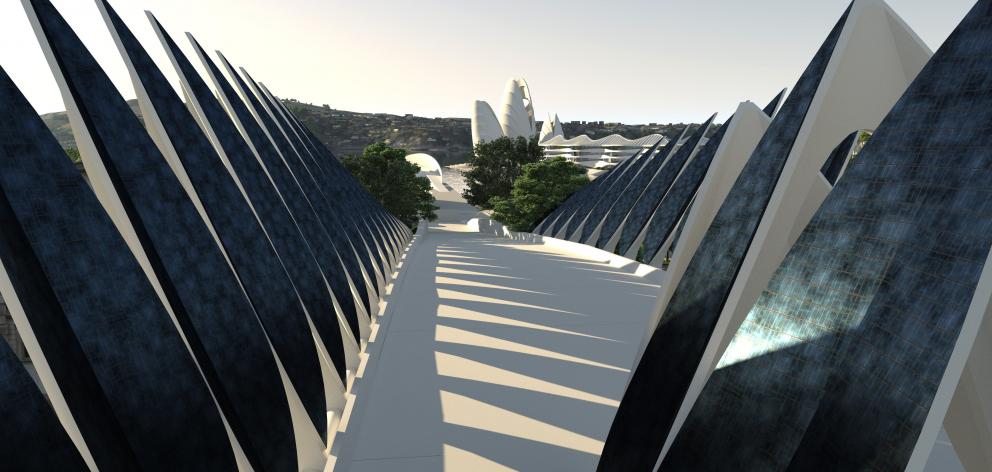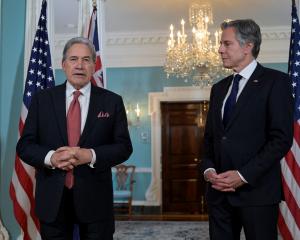
If we are prepared to set aside the pork barrel politics of the Government's Provincial Growth Fund (PGF), I suspect a sigh of relief can be heard throughout all the regions that someone in Wellington is at last recognising the role of provincial and rural New Zealand's dominant contribution to this country's wealth creation.
The continuing focus on Auckland and northern growth is simply making that area bigger and harder to service. It also becomes even more consumptive in every sense of that word.
The people of Otago - and not just Dunedin - must be empowered to make crucial decisions that will determine whether we, the people of this region, have a role to play in deciding on all of its future investments.
By allowing crucial decisions to be made for us through delegating our authority to Dunedin-based councils, we ensure decisions will always have an urban flavour.
The ''cockle-shell'' bridge proposal appears to have moved directly into the ''done deal'' stage. Most would agree the design appears to be outstanding - if a bridge of that nature is indeed needed to connect the waterfront to the city - yet neither the Dunedin City Council nor the Otago Regional Council in their enthusiasm for the ''cockle-shell'' bridge project has asked or answered the most basic questions that must be addressed.
The outstanding economist Thomas Sowell states three fundamental questions must be put when considering issues involving government and local government funding, or put another way, spending the public's money.
Those questions are - Compared with what? At what cost? What evidence do you have?
Compared with what?
Are there to be no other concept innovations to be considered for the Steamer Basin or other developments to ponder throughout the region besides this cockle-shell design, which does echo just a little of the design of the Sydney Opera House?
There is a huge demand on financial resources throughout the hinterland of Otago - not the least of which is for storage of fresh water; our greatest natural capital. The multiplier effect of storage of water for a wide variety of usage is off the scale compared with most projects, including the cockle-shell proposal.
A gondola for use as carriage of large numbers of tourists but with minimal footprint has also been discussed and promoted. And what of a proposal to make the Otago Peninsula predator-free, with a fence designed to exclude predators which will continue to decimate our endangered wildlife? (The concept of being predator free by 2050 using traditional methods is just silly stuff.)
At what cost?
The twenty-odd million is just the start of the proposed waterfront development. The idea of ''build and they will come'' is a somewhat tenuous economic concept.
Much of the Steamer Basin is leasehold land that the regional council (which owns Port Otago) shows no sign of abandoning. Port Otago owns this land through an entity called Chalmers Property, which has indicated it is not about to sell off the freehold of this area to developers, let alone at a discounted price to incentivise development.
They could, of course, be directed to do so by the regional council through Port Otago's statement of corporate intent. Chalmers Property could well afford to build the van Brandenburg concept as a gift to the city - without the need to rate or tax ratepayers.
Port Otago, after all, was gifted to the regional council many years ago. The council will cope with a slightly reduced dividend for a couple of years, as its reserves are plentiful.
What evidence do you have?
The Chinese Garden in Dunedin (by way of example) is not the reason tourists flock to the region and certainly not to the waterfront area of the Steamer Basin. Dunedin possesses a really mean east wind in the area, which, regardless of the direction from whence the east wind blows, is always cold.
If the evidence exists that the building of the ornate bridge will generate wealth for the region, or even be the catalyst for widespread development, I for one would love to read it. No apology should ever be made asking for the evidence for hopefully bringing our delegated decision-makers to face a little bit of reality.
Producing something to sell - like goods and services here in Otago - is the answer to ensuring this region's future; not (just) structures.
If we are to build something of real value to the region using the PGF fund, there needs to be an entirely transparent, evidence-based assessment of the various alternatives, by all of Otago's councils. The van Brandenburg concept looks fine, but compared with what else?
-Gerrard Eckhoff is a retired farmer from near Alexandra and a former Otago regional councillor.












